
The 1948 Arab–Israeli War, also known as the First Arab–Israeli War, followed the civil war in Mandatory Palestine as the second and final stage of the 1948 Palestine war. The civil war became a war of separate states with the Israeli Declaration of Independence on 14 May 1948, the end of the British Mandate for Palestine at midnight, and the entry of a military coalition of Arab states into the territory of Mandatory Palestine the following morning. The war formally ended with the 1949 Armistice Agreements which established the Green Line.

The history of Jordan refers to the history of the Hashemite Kingdom of Jordan and the background period of the Emirate of Transjordan under British protectorate as well as the general history of the region of Transjordan.

The Bedouin, Beduin, or Bedu are pastorally nomadic Arab tribes who have historically inhabited the desert regions in the Arabian Peninsula, North Africa, the Levant, and Mesopotamia (Iraq). The Bedouin originated in the Syrian Desert and Arabian Desert but spread across the rest of the Arab world in West Asia and North Africa after the spread of Islam. The English word bedouin comes from the Arabic badawī, which means "desert dweller", and is traditionally contrasted with ḥāḍir, the term for sedentary people. Bedouin territory stretches from the vast deserts of North Africa to the rocky ones of the Middle East. They are sometimes traditionally divided into tribes, or clans, and historically share a common culture of herding camels, sheep and goats. The vast majority of Bedouins adhere to Islam, although there are some fewer numbers of Christian Bedouins present in the Fertile Crescent.
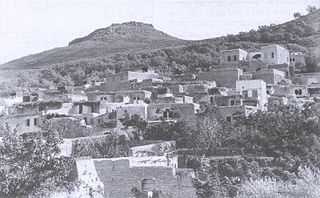
Hittin was a Palestinian village located 8 kilometers (5 mi) west of Tiberias before it was occupied by Israel during the 1948 Arab-Israeli war when most of its original residents became refugees. As the site of the Battle of Hattin in 1187, in which Saladin reconquered most of Palestine from the Crusaders, it has become an Arab nationalist symbol. The shrine of Nabi Shu'ayb, venerated by the Druze and Sunni Muslims as the tomb of Jethro, is on the village land. The village was ruled by the Ottoman Empire from the 16th century until the end of World War I, when Palestine became part of the British Mandate for Palestine. On July 17 1948, the village was occupied by Israel, after its residents fled out of their homes because of Nazareth's occupation. in later years, the Moshavs Arbel and Kfar Zeitim were erected where Hittin used to be.
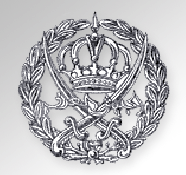
The Arab Legion was the police force, then regular army, of the Emirate of Transjordan, a British protectorate, in the early part of the 20th century, and then of the Hashemite Kingdom of Jordan, an independent state, with a final Arabization of its command taking place in 1956, when British senior officers were replaced by Jordanian ones.

Joseph Vladimirovich (Volfovich) Trumpeldor was an early Zionist activist who helped to organize the Zion Mule Corps and bring Jewish immigrants to Palestine. Trumpeldor died defending the settlement of Tel Hai in 1920 and subsequently became a Jewish national hero. According to a standard account, his last words were "It's nothing, it is good to die for our country", but that he ever said these words has been challenged.

Tel Hai is a name of the former Jewish settlement in northern Galilee, the site of an early battle between Jews and Arabs heralding the growing civil conflict, and of a monument, tourist attraction, and a college. It is currently part of kibbutz Kfar Giladi.
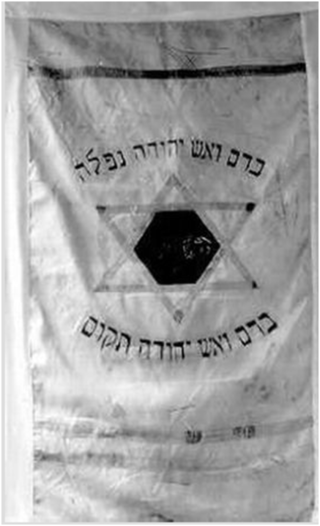
Hashomer was a Jewish defense organization in Palestine founded in April 1909. It was an outgrowth of the Bar-Giora group and was disbanded after the founding of the Haganah in 1920. Hashomer was responsible for guarding Jewish settlements in the Yishuv, freeing Jewish communities from dependence upon foreign consulates and Arab watchmen for their security. It was headed by a committee of three: Israel Shochat, Israel Giladi and Mendel Portugali.

Samakh was a Palestinian Arab village at the south end of Lake Tiberias in Ottoman Galilee and later Mandatory Palestine. It was the site of battle in 1918 during World War I.

Kfar Giladi is a kibbutz in the Galilee Panhandle of northern Israel. Located south of Metula on the Naftali Mountains above the Hula Valley and along the Lebanese border, it falls under the jurisdiction of Upper Galilee Regional Council. In 2022 it had a population of 702.
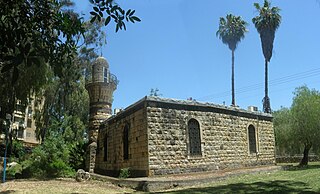
Al-Khalisa was a Palestinian Arab village situated on a low hill on the northwestern edge of the Hula Valley of over 1,800 located 28 kilometers (17 mi) north of Safad. It was depopulated in the 1948 Palestine war.
The 1947–1948 civil war in Mandatory Palestine was the first phase of the 1947–1949 Palestine war. It broke out after the General Assembly of the United Nations adopted a resolution on 29 November 1947 recommending the adoption of the Partition Plan for Palestine.

The Jordan Valley forms part of the larger Jordan Rift Valley. Unlike most other river valleys, the term "Jordan Valley" often applies just to the lower course of the Jordan River, from the spot where it exits the Sea of Galilee in the north, to the end of its course where it flows into the Dead Sea in the south. In a wider sense, the term may also cover the Dead Sea basin and the Arabah valley, which is the rift valley segment beyond the Dead Sea and ending at Aqaba/Eilat, 155 km (96 mi) farther south.
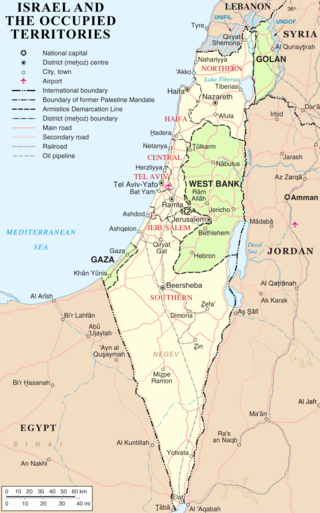
The modern borders of Israel exist as the result both of past wars and of diplomatic agreements between the State of Israel and its neighbours, as well as an effect of the agreements among colonial powers ruling in the region before Israel's creation. Only two of Israel's five total potential land borders are internationally recognized and uncontested, while the other three remain disputed; the majority of its border disputes are rooted in territorial changes that came about as a result of the 1967 Arab–Israeli War, which saw Israel occupy large swathes of territory from its rivals. Israel's two formally recognized and confirmed borders exist with Egypt and Jordan since the 1979 Egypt–Israel peace treaty and the 1994 Israel–Jordan peace treaty, while its borders with Syria, Lebanon and the Palestinian territories remain internationally defined as contested.

Dafna is a kibbutz in the Upper Galilee in northern Israel. Located seven kilometres east of Kiryat Shmona and surrounded by three streams of the Dan River,it falls under the jurisdiction of Upper Galilee Regional Council. The kibbutz was founded on 3 May 1939 as a Tower and Stockade settlement, the first such settlement in the northern Hula Valley. Dafna, Beit Hillel, She'ar Yashuv and Dan were known as the "Ussishkin Fortresses", named after Menahem Ussishkin. In 2022 it had a population of 1,073.
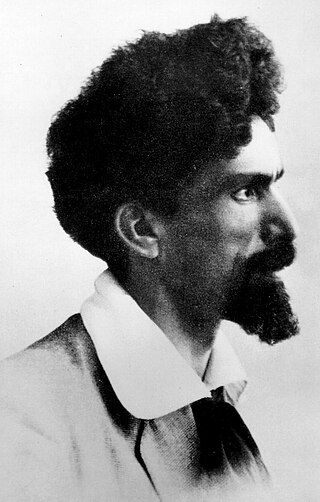
Israel Shochat was a founder of and a key figure in Bar-Giora and Hashomer, two of the precursors of the Israel Defense Forces.

The Battles of the Kinarot Valley, is a collective name for a series of military engagements between the Haganah and the Syrian army during the 1948 Arab–Israeli War, fought between 15–22 May 1948 in the Kinarot Valley. It includes two main sites: the Battle of Degania–Samakh (Tzemah), and battles near Masada–Sha'ar HaGolan. The engagements were part of the battles of the Jordan Valley, which also saw fighting against Transjordan in the area of Gesher.
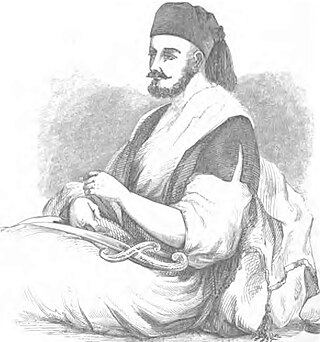
Aqil Agha al-Hasi was the strongman of northern Palestine in the mid-19th century, during Ottoman rule. He was originally a commander of Arab irregular soldiers, known as the Hawwara tribe, in the service of the Ottoman governors of Acre. His influence in the Galilee grew as he strengthened his alliances with the powerful Beni Sakhr and Anizzah tribes of Transjordan, and recruited unemployed Bedouin irregulars from Egypt into his own band of irregulars, who thenceforth became known as the Hanadi tribe. He was known by his men and Western travelers to be courageous, cunning and charismatic, all qualities that contributed to his rise as the de facto ruler of the Galilee.

The Battle of Tel Hai was fought on 1 March 1920 between Arab and Jewish forces at the village of Tel Hai in Northern Galilee. In the course of the event, a Shiite Arab militia, accompanied by Bedouin from a nearby village, attacked the Jewish agricultural locality of Tel Hai. In the aftermath of the battle eight Jews and five Arabs were killed. Joseph Trumpeldor, the commander of Jewish defenders of Tel Hai, was shot in the hand and stomach, and died while being evacuated to Kfar Giladi that evening. Tel Hai was eventually abandoned by the Jews and burned by the Arab militia.

















